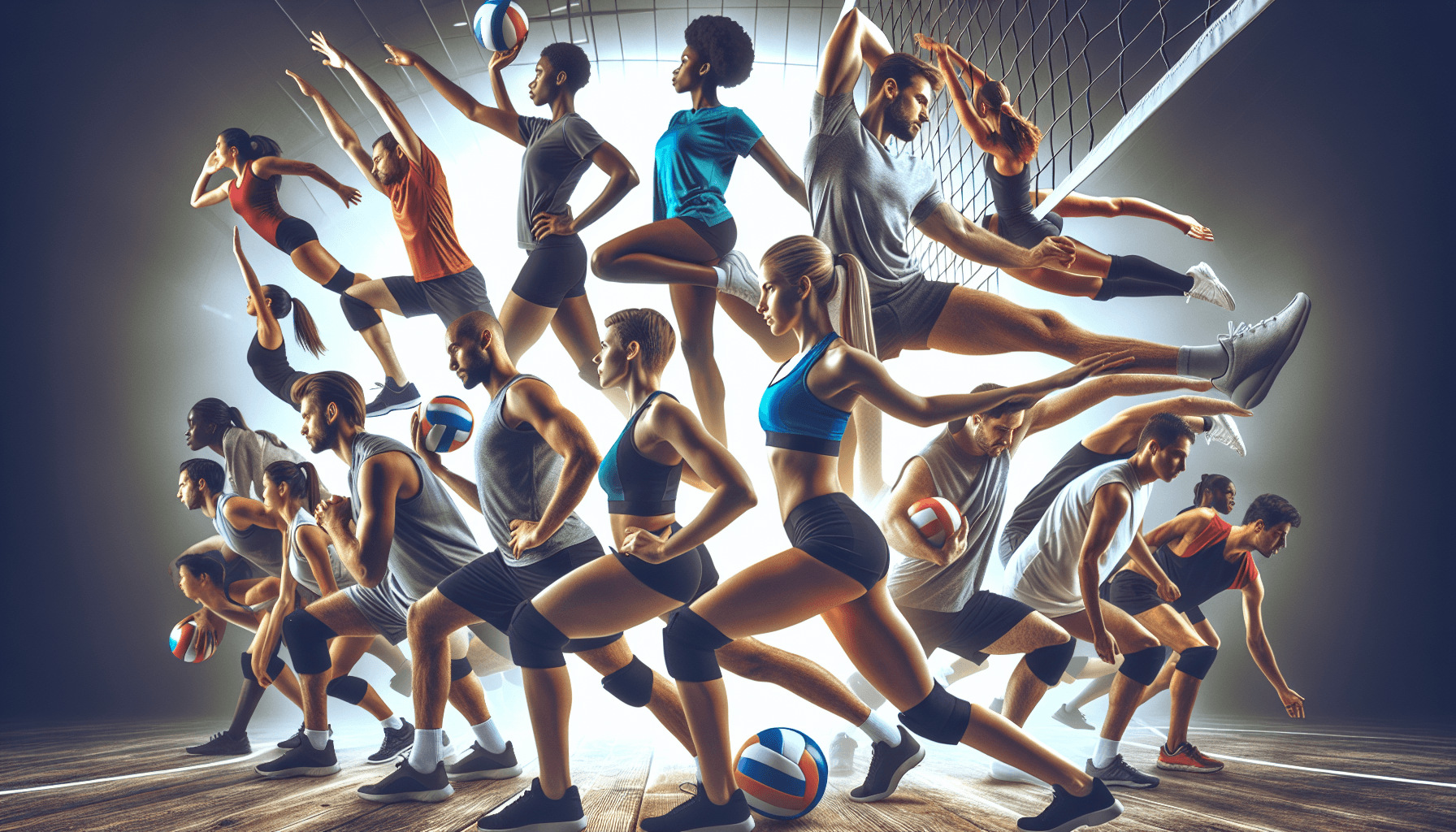As a volleyball player, you know how crucial it is to have explosive power, agility, and quick reflexes on the court. But there’s one aspect of training that is often overlooked – mobility. Mobility training is an essential component of a well-rounded volleyball training program, as it plays a key role in improving performance and preventing injuries.
What is Mobility Training?
Mobility training, also known as flexibility training, refers to exercises and techniques aimed at improving flexibility, joint range of motion, and overall movement quality. It focuses on increasing the ability of the joints and muscles to move freely and efficiently through their full range of motion.
There are various types of mobility training, including dynamic stretching, static stretching, and mobility drills. Dynamic stretching involves moving your body through a full range of motion, while static stretching involves holding a stretch for an extended period of time. Mobility drills, on the other hand, are specific exercises designed to target and enhance the mobility of particular joints or muscle groups.
The Benefits of Mobility Training for Volleyball Players
Why should volleyball players incorporate mobility training into their routine? Here are several key benefits:
- Improved Performance: Better mobility allows volleyball players to move more efficiently on the court. It enhances agility, speed, and overall movement quality, enabling players to reach balls, change directions, and perform various volleyball skills with greater ease and effectiveness.
- Injury Prevention: Volleyball involves repetitive motions and high-impact movements, which can put stress on the joints and muscles. Poor mobility can lead to imbalances and limitations in movement, increasing the risk of injuries. By improving flexibility and joint range of motion, mobility training helps prevent common volleyball injuries such as ankle sprains, knee injuries, and shoulder problems.
- Enhanced Recovery: Regular mobility training can aid in promoting faster recovery and reducing muscle soreness. It helps flush out metabolic waste products from the muscles, improves blood flow, and enhances the delivery of nutrients to the muscles, which can speed up the recovery process after intense training sessions or matches.
- Corrects Postural Imbalances: Volleyball players often develop postural imbalances due to the repetitive nature of the sport and the uneven demands placed on the body. Mobility training can address these imbalances by improving flexibility and alignment, helping to correct posture and prevent long-term issues.
It’s important to note that mobility training is not only beneficial for professional or elite volleyball players. It is equally valuable for recreational players and even anyone engaging in regular physical activities.
How to Incorporate Mobility Training into Your Volleyball Training Routine
Now that you understand the importance of mobility training, it’s time to incorporate it into your volleyball training routine. Here are some tips:
- Warm-Up: Start each training session with a dynamic warm-up that includes mobility exercises. This will prepare your body for the volleyball-specific movements and maximize the benefits of your training.
- Stretching: Include both dynamic and static stretching exercises in your warm-up and cool-down routines. Dynamic stretching helps to increase the blood flow and warm up the muscles, while static stretching should be performed after your training session to improve flexibility and promote recovery.
- Mobility Drills: Incorporate specific mobility drills that target the joints and muscle groups used in volleyball. Focus on areas such as the shoulders, hips, ankles, and spine, as these are commonly affected by the demands of the sport.
- Consistency: Make mobility training a regular part of your routine. Aim to dedicate at least 10-15 minutes to mobility exercises 2-3 times a week. Consistency is key to reaping the benefits of improved flexibility and movement quality.
- Seek Professional Guidance: If you’re unsure about which mobility exercises to perform or how to incorporate them into your routine, consider seeking guidance from a qualified sports coach or a physical therapist who specializes in volleyball.
In conclusion, mobility training should not be overlooked by volleyball players. It is a fundamental component of a well-rounded training program that can improve performance, prevent injuries, and enhance overall movement quality. By incorporating mobility exercises into your routine and staying consistent, you’ll reap the benefits both on and off the volleyball court.
If you’re interested in learning more about mobility training and its benefits, I recommend checking out this comprehensive guide on mobility training. It provides valuable information and resources to help you take your volleyball training to the next level.

